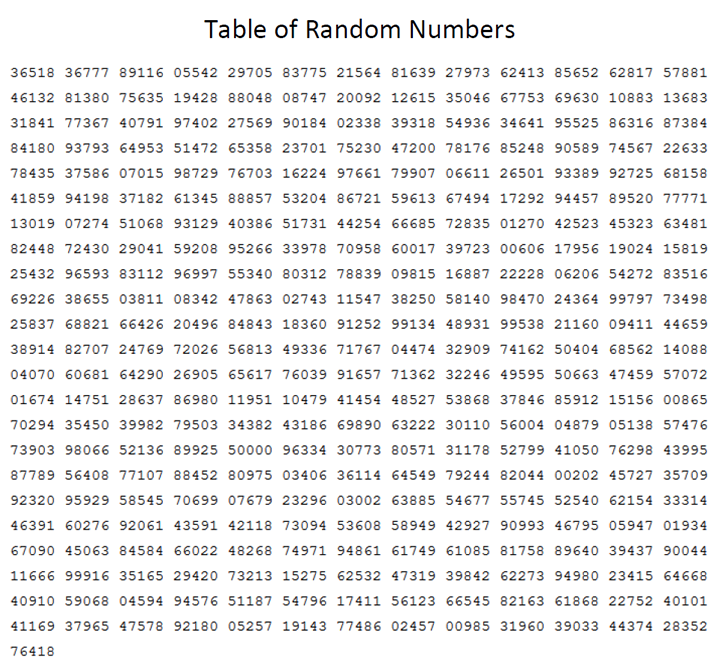When working with statistics or probability, you will see the expression "random sampling" implying a "selection chosen at random".
The concept of "randomness" implies that every item being considered has an equal chance of being selected as part of the sample. |
There are several ways to create random samples.
Below are three simple ways that can be used at this level.
| Example: Find the probability of selecting 5 students at random from a class of 28 students to serve on a committee. |
1. Random drawing: Place the names all of the students on a slip of paper. Place the slips in a paper bag. Draw 5 slips from the bag without looking in the bag. This is a simple means of drawing students at random which will ensure that all of the students have an equal chance of being selected.
2. Random calculator number: Assign each student a number from 1 to 28. Use a calculator to generate 5 "random" numbers from 1 to 28 to select the students. Again, all of the students will have an equal chance of being selected.
|
Most calculators cannot generate "truly" random numbers. They use a formula with a number seed to generate the numbers, which means that the list could potentially be repeated (making the list not truly random). Such pseudo-random number lists, however, will be sufficient for your investigations at the JrMath level.
|
3. Random number table: A random number table is a series of digits (0 to 9) arranged randomly in rows and columns, as demonstrated in the small sample shown below. Tables come in a variety of layouts. The small sample below has 5-digit numbers, arranged in rows and columns. Random number tables usually fill at least one full page, if not more.

For 28 students, we will use the first 2-digits of the grouped numbers in the chart (to get 01 to 28).
• Without looking, point to any number to start: 19428 means #19 will be the first chosen student.
• Move down the column to the next number:
97402 gives 97 (too large for our choices).
• Move down to the next number: 51472 gives 51 (still too big)
• Move to top of next column: 29705 gives 29 (still too large)
• Keep moving down the column (then up to the top of the next column) until the first two digits are in the range from 01 to 28.
We will end up with #19, #08, #23, #21, and #20.
NOTE: While movement in this table was vertical (up and down the columns), movement horizontally (across the rows) would also have worked (giving a different result).
NOTE: Random number tables come in various forms, and the patterns for reading the numbers may vary. Irregardless, the random tables are a valuable source for insuring that numbers are truly random in nature. Below is a more representative sample of the table that was used above.
